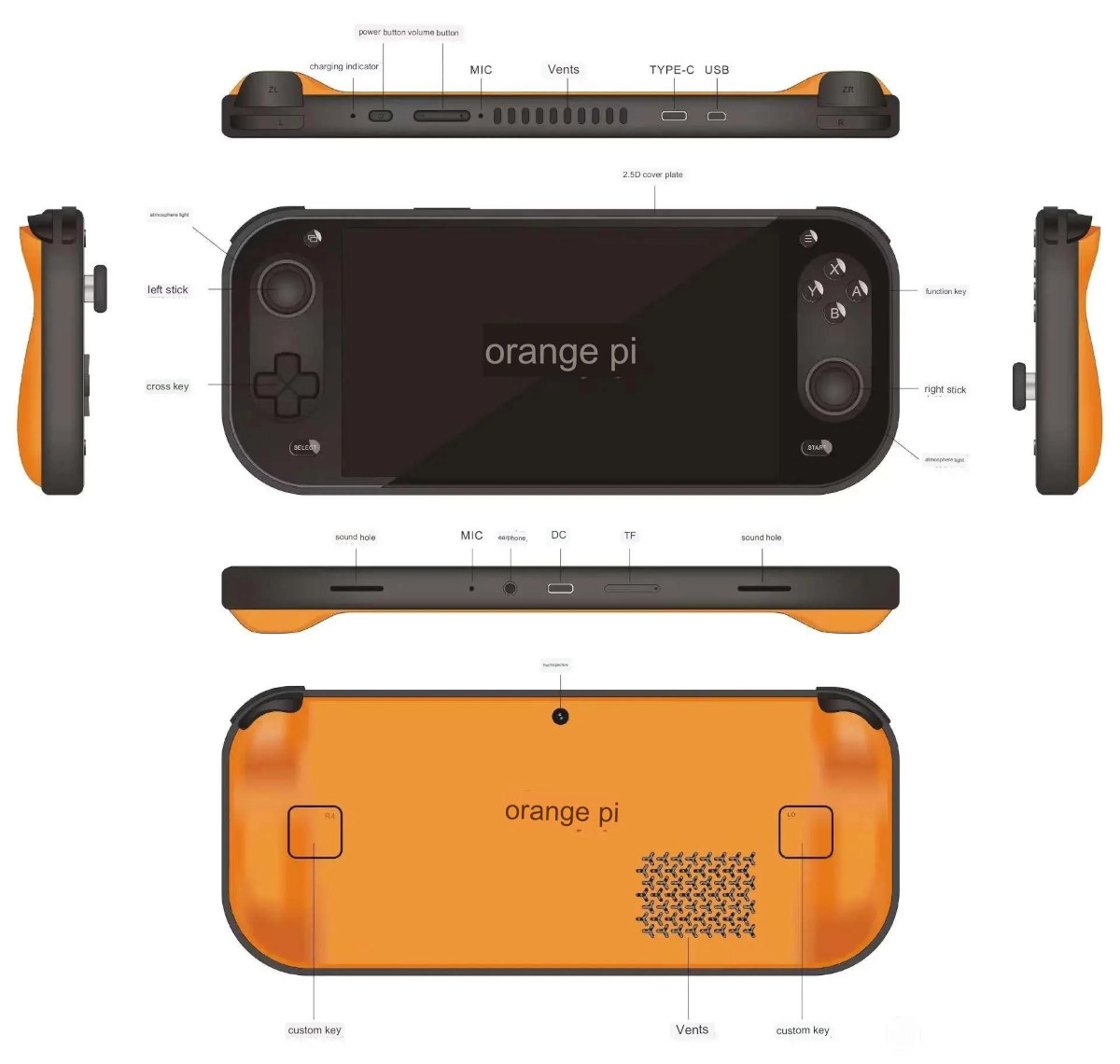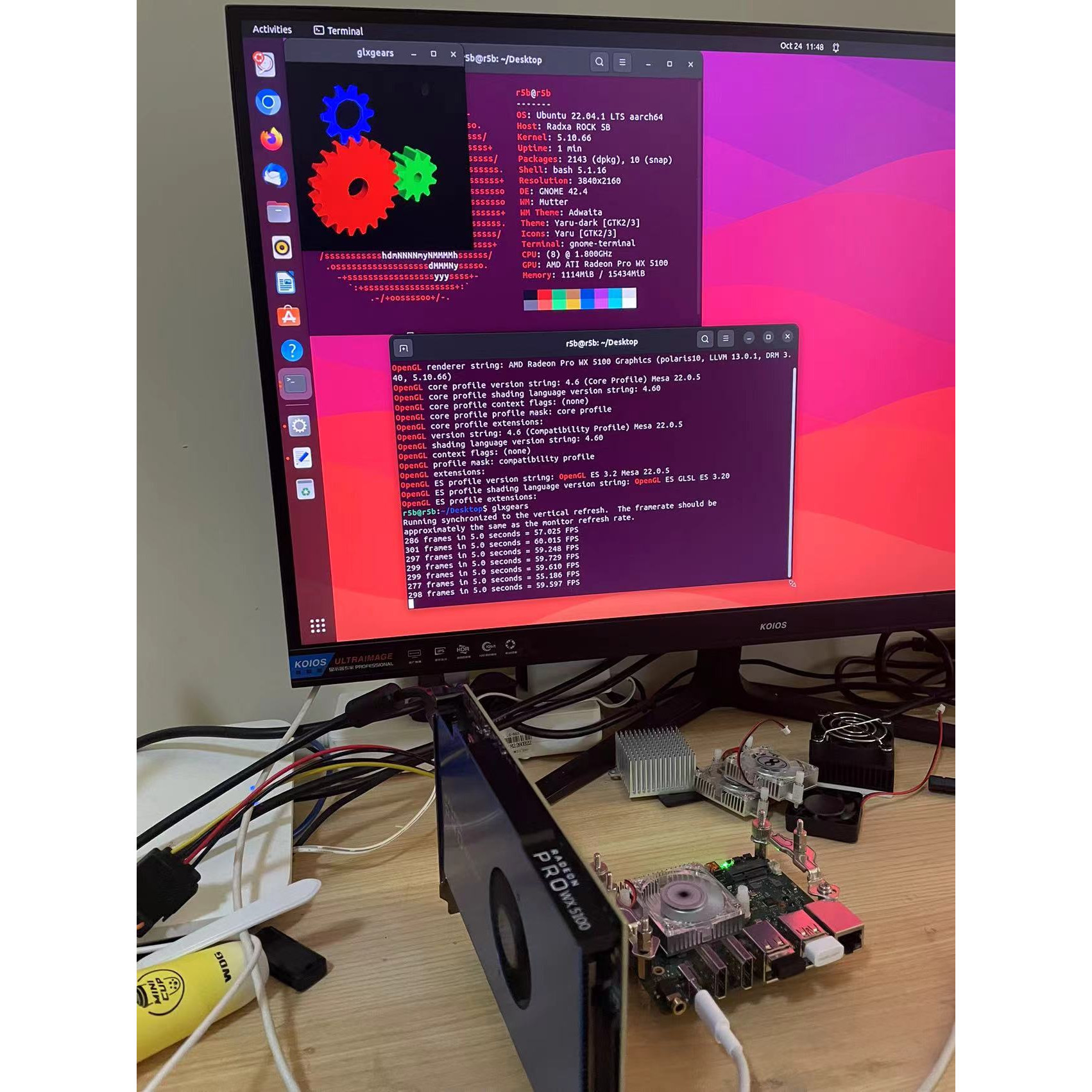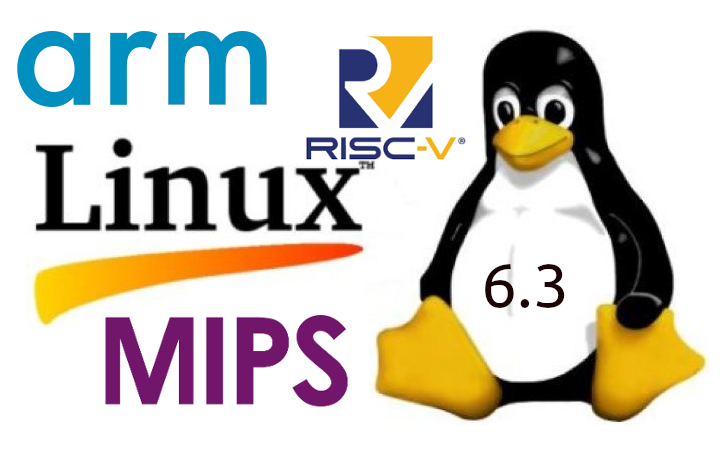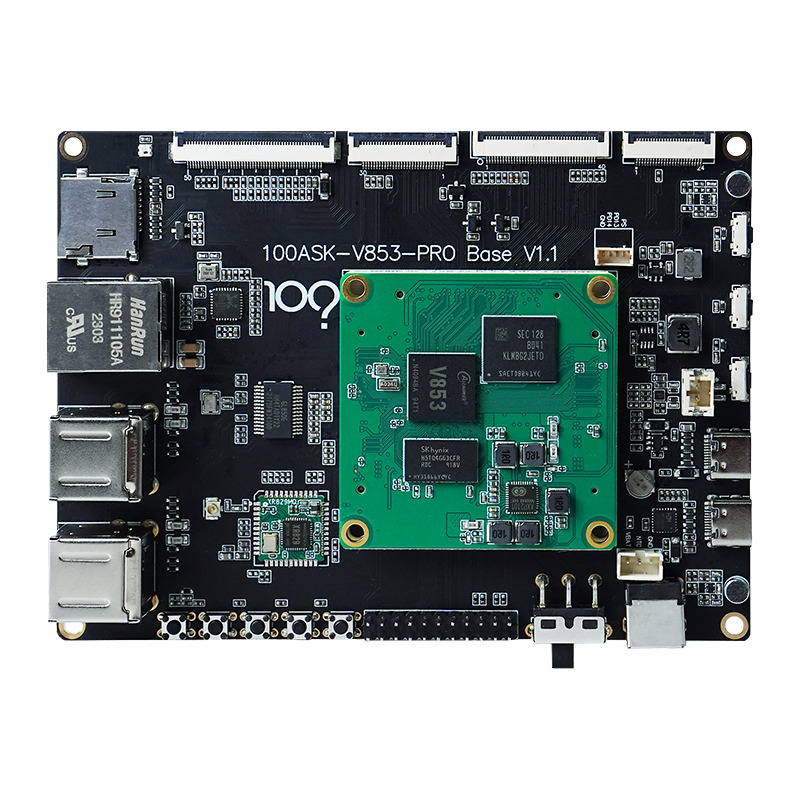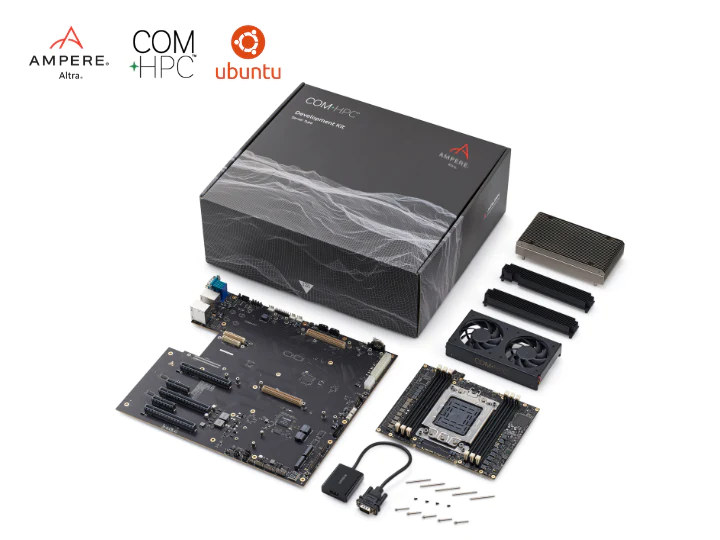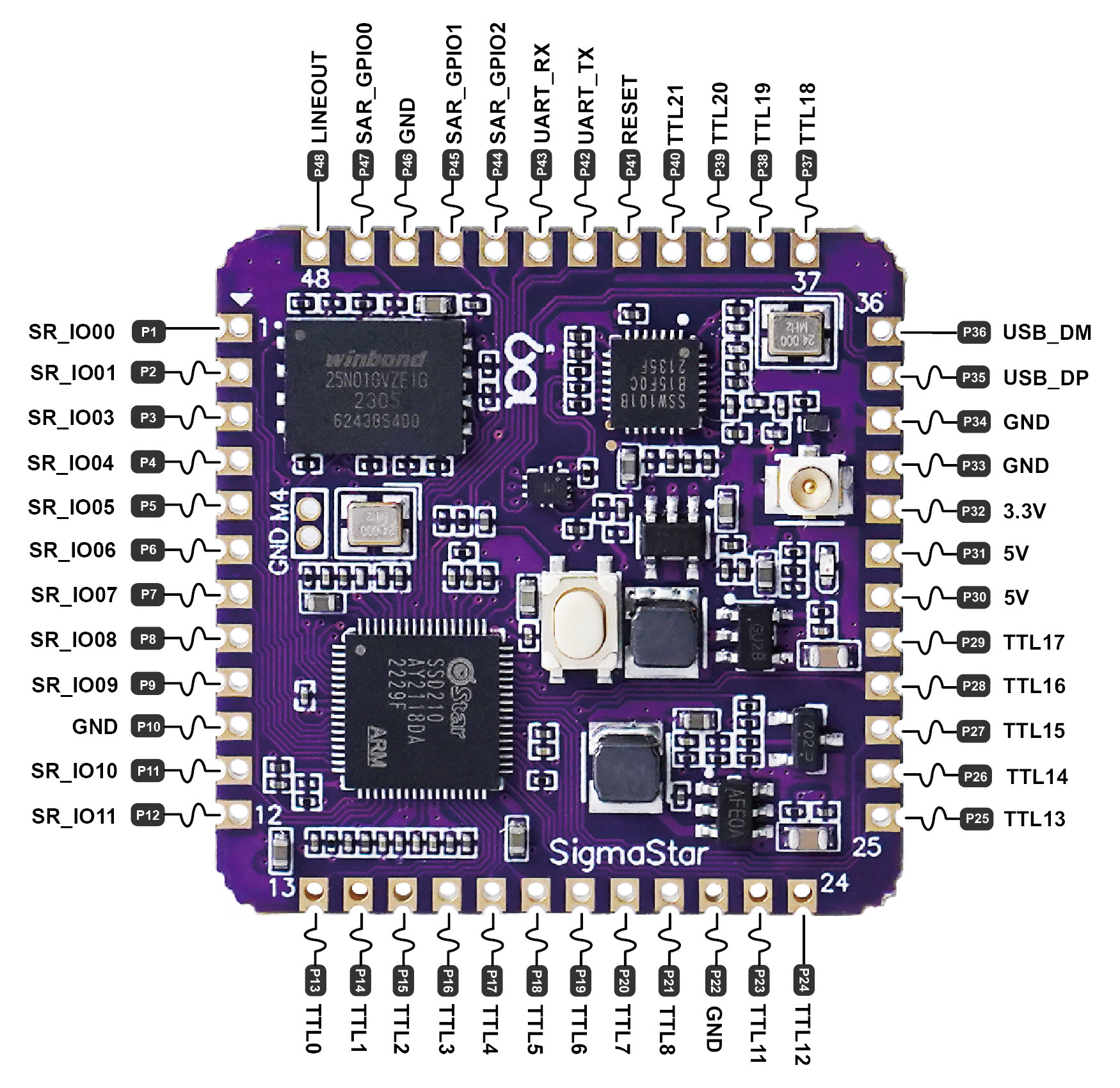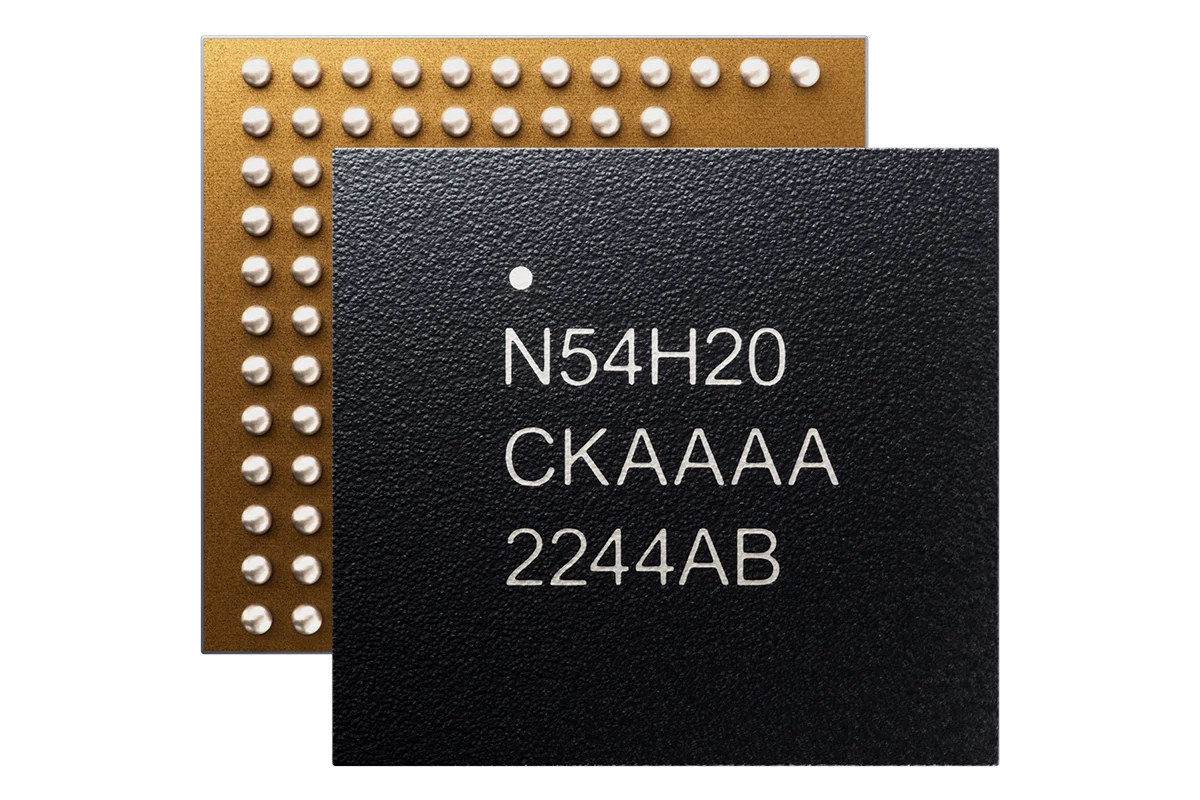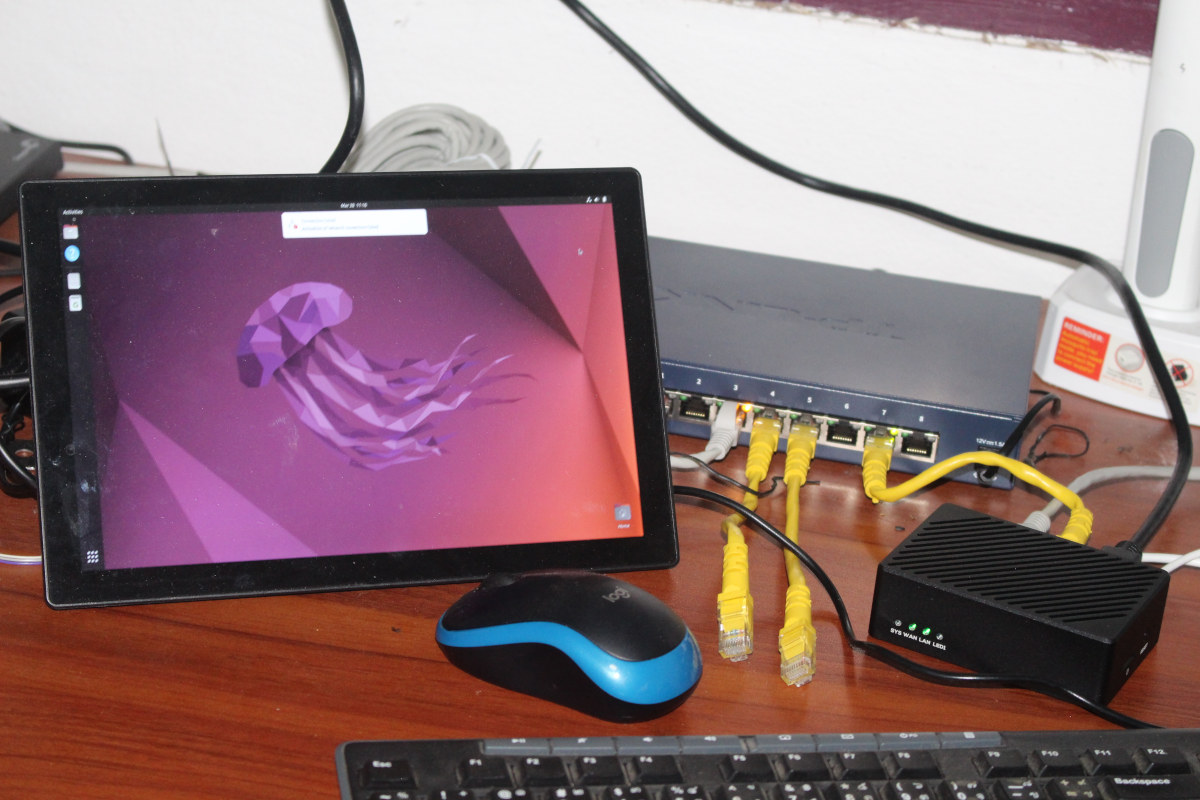Single board computer manufacturer Orange Pi Ltd is working on a portable gaming console that will come with either a Rockchip RK3588S processor for Android/Linux gaming, or AMD Ryzen 7 7800U/6800U for Windows gaming. The industrial design looks to be the same for all models with a 7-inch touchscreen display, a D-Pad, two joysticks, XBOX-styled ABXY buttons, two customisable buttons on the back, two microphones, stereo speakers, three USB ports including one only for charging, The Orange Pi portable gaming console will be offered in three variants when it launches in China in October during Golden Week: AMD Ryzen 7 7840U processor with 16GB RAM, 512GB storage running Windows 11 for an early bird price of 3,000 RMB ($434 US), or a regular price of 3,499 RMB ($506). AMD Ryzen 7 6800U with Windows 11 selling for 2,000 RMB, or about $289 US (early bird price). Rockchip RK3588S octa-core Arm […]
AMD Radeon PCIe graphics card tested with a Rockchip RK3588 SBC (Radxa Rock 5B)
When Rockchip first introduced the Rockchip RK3399 processor with a PCIe interface people initially hoped they could connect graphics card, but those hopes were quickly squashed due to a 32MB addressing limit. However, the PCIe implementation on the newer Rockchip RK3588 processor does not have such a limitation, and last November, Radxa teased a demo with an AMD Radeon Pro WX 5100 PCIe graphics card connected to the Rock 5B SBC running the glxgears demo on the Radeon GPU. I couldn’t find any instructions to reproduce this setup, but this got Jasbir interested, and he tried to do a test of his own with the Radxa Rock 5B connected to an AMD Radeon R7 520 (XFX R7 250 low-profile) through an “M.2 Key M Extender Cable to PCIE x16 Graphics Card Riser Adapter” ($14 plus taxes on Aliexpress) and powered by an LR1007 120W 12VDC ATX board. The experiment was […]
Linux 6.3 release – Notable changes, Arm, RISC-V and MIPS architectures
Linux Torvalds has just announced the release of Linux 6.3 on the Linux Kernel Mailing List (LKML): It’s been a calm release this time around, and the last week was really no different. So here we are, right on schedule, with the 6.3 release out and ready for your enjoyment. That doesn’t mean that something nasty couldn’t have been lurking all these weeks, of course, but let’s just take things at face value and hope it all means that everything is fine, and it really was a nice controlled release cycle. It happens. This also obviously means the merge window for 6.4 will open tomorrow. I already have two dozen pull requests waiting for me to start doing my pulls, and I appreciate it. I expect I’ll have even more when I wake up tomorrow. But in the meantime, let’s enjoy (and test) the 6.3 release. As always, the shortlog […]
100ASK-V853-Pro – A feature-rich Allwinner V853 board designed for AI vision applications
The 100ASK-V853-Pro board is a development kit consisting of an Allwinner V853 system-on-module board (SoM) and a feature-rich carrier board with a large number of interfaces. Allwinner V853 supports up to 1TOPS of NPU computing power and is mainly for AI vision application development. The core board contains a DDR and eMMC as well as a PMU chip (AXP2101) and is connected to the carrier board through a board-to-board connector. All the functional resources of the V853 are drawn out through the carrier board. The carrier board comes with 2-channels CSI camera interfaces as well as RGB and MIPI DSI display interfaces. Although 1 TOPS of AI computing power is not outstanding, the NPU can still be used to accelerate AI vision applications at the edge. The board also comes with four USB 2.0 ports (two Type-A, two Type-C), an 100Mbps Ethernet port, a 22-pin header for expansion, and five […]
ADLINK Ampere Altra Dev Kit features ATX motherboard with 32 to 80-core Arm COM-HPC CPU module
ADLINK Ampere Altra Dev Kit is an “IoT prototyping kit” based on an ATX motherboard fitted with a COM-HPC-ALT Server Type Size E module powered by an Ampere Altra 32, 64, or 80-core Arm Neoverse N1 server processor, and supporting up to 768GB DDR4 memory. It’s basically the same hardware as found in the Ampere Altra Developer Platform (AADP), but without the tower and power supply, nor optional features like liquid cooling or 10GbE interfaces. Ampere Altra Dev Kit (AADK) specifications and content: Computer-on-Module – COM-HPC Server Type Size E Ampere Altra module with Ampere Altra 32 to 80-core 64-bit Arm Neoverse N1 processor up to 1.7/2.2/2.6 GHz (32/64/80 cores, TPD: 60W to 175W), up to 768 DDR4 ECC memory Mainboard – COM-HPC Server Base carrier board Storage – 2x M.2 slot for NVMe SSD Video – VGA port Audio – 3.5mm audio jack Networking – 1x Gigabit Ethernet Expansion […]
$7 DongshanPI-PicoW is a small Arm Linux board with SSW101B USB WiFi chip, four 12-pin headers
Based on its name, the DongshanPI-PicoW board/module aims to be an Arm Linux alternative to the Raspberry Pi Pico W with a SigmaStar SSD210 dual-core Cortex-A7 processor with 64MB RAM, an SSW101B USB WiFi 4 chip, plus a good amount of I/Os thanks to four 12-pin headers. The module also comes with a 128MB SPI flash to run Linux, takes 5V power input, and offers a display interface up to 1280×800, USB 2.0, audio interfaces, and more in a small 31×31 mm form factor with 48 through and castellated holes that should be easy to integrate into compact devices. DongshanPI-PicoW specifications: SoC – SigmaStar SSD210 dual-core Arm Cortex-A7 at up to 1.0GHz with FPU, NEON, MMU, DMA, 2D graphics accelerator, 64MB on-chip DDR2 RAM Storage – 128MB SPI NAND flash (Winbond W25N010) Connectivity – Sigmastart SSW101B 802.11b/g/n 2.4GHz 1T1R WiFi 4 module + u.FL antenna connector USB switch – Onsemi […]
Nordic Semi nRF54H20 Cortex-M33 + RISC-V wireless SoC supports Bluetooth 5.4, LE Audio, Bluetooth mesh, Thread, Matter, and more
Nordic Semi nRF54H20 is a 320 MHz multiprotocol wireless SoC with several Arm Cortex-M33 and RISC-V cores, support for Bluetooth 5.4 and greater with features like LE Audio and Bluetooth mesh, as well as Thread, Matter, and so on. It is the first part of the fourth generation nRF54 family manufactured with a 22nm process, and its application processor doubles the processing power (2x CoreMark) of the Arm Cortex-M33 application core in the nRF5340 SoC and embeds up to 2MB flash, 1MB SRAM. nRF54H20 preliminary specifications and highlights: CPU Application core – Arm Cortex-M33 @ up to 320 MHz with 2 MB Flash + 1MB SRAM Network core – Arm Cortex-M33 Several RISC-V cores (for low power?) Wireless Bluetooth 5.4 LE with direction-finding, Bluetooth mesh, LE audio, etc… 802.15.4 radio for Thread, Matter -100 dBm RX sensitivity @ 1 Mbps for Bluetooth LE Up to 10 dBm TX power New […]
NanoPi R6C review – Ubuntu 22.04, NVMe SSD, USB debug
FriendlyElec has recently announced the NanoPi R6C mini PC that a variant of the Rockchip RK3588S powered NanoPi R6S mini PC and 2.5GbE router that we reviewed with FriendlyWrt/OpenWrt and Ubuntu 22.04 earlier this year, but with just one 2.5GbE and one GbE interface, a built-in M.2 NVMe SSD socket and USB-C Debug UART port for easy external access to the serial console. The company sent me a NanoPi R6C sample for review, but since we’ve already tested the similar NanoPi R6S extensively, I’ll write a single-post mini review this time around, checking out the hardware, and focusing on testing the new features such as the NVMe SSD and the USB debug port when running Ubuntu 22.04. NanoPi R6C unboxing As usual, the device came in a non-descript cardboard package with a few 3M rubber pads. The most obvious change compared to the NanoPi R6S is that all main ports […]


